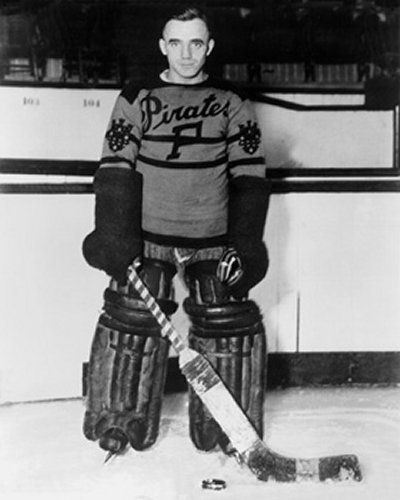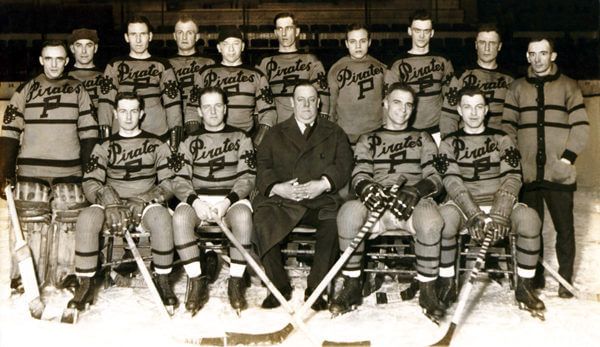MONTREAL -- The Penguins will be heading outside for the sixth time in franchise history when they play the Bruins in the Winter Classic at Fenway Park on Jan. 2.
While the three Stadium Series games the Penguins have played in have included more modern-looking jerseys, the Winter Classic has typically served as an opportunity for teams to throw it back with their jersey selections.
The Penguins did that in their first two Winter Classic games, wearing the 1968-71 baby-blue jerseys with the circular logo for the 2008 Winter Classic in Buffalo, and a jersey that was a fusion of the navy blue coloring of the late 1970s jerseys and the circular logo from the franchise's early years for the 2011 Winter Classic at Heinz Field.
"I think the fans are going to love the jersey that we selected for the Winter Classic on January 2 in Boston," Penguins president of business operations Kevin Acklin told me on Thursday.
The Penguins will again be wearing a throwback jersey this time around. And they'll be throwing it way back.
"We went back historically and looked at some of the old, very early pre-Penguins jerseys," Acklin told me of the design process.
Acklin didn't divulge which pre-1967 team from which the Penguins drew inspiration for the jerseys. But there are only a handful of options, and one of them just makes too much sense.
There were a number of teams in the late-19th and early-20th centuries that played at the old Duquesne Gardens in Oakland, with some teams only lasting a year or two. Some of the more prominent and longer-lasting teams included the Pittsburgh Hornets, a team that played in various leagues from 1936-56 and 1961-67, and wore red and white for most of their history. There were the Pittsburgh Yellow Jackets, an amateur then semi-pro team that existed from 1915-25.
The Yellow Jackets became the Pittsburgh Pirates in 1925, the city's first NHL team and the most well-known of the pre-1967 local hockey teams.
The Pirates shared a division with the New York Americans and fittingly, the Boston Bruins. The Pirates played their first game on Nov. 26, 1925 in Boston, and handed the Bruins a 2-1 loss. The Pirates' goals came from Lionel "L Train" Conacher and Harold "Howl" Darragh, with 5-foot-3 goaltender Roy "Shrimp" Worters earning the win in net.

Pirates coach Odie Cleghorn revolutionized the game with the addition of line changes on the fly, and the first coach to have three set forward lines.
"These youthful Pirates are a young lot of speed demons and they simply dashed over the ice in dizzying fashion," the Montreal Gazette wrote of Cleghorn's changes to the game.
The Pirates made the playoffs twice in their five-year history, losing to the Montreal Maroons in the semifinal round in 1926, and losing to the Rangers in the quarterfinals in 1928.
The Pirates remained in Pittsburgh until relocating to Philadelphia and becoming the Quakers in 1930. Hib Milks finished as the Pirates' all-time leading scorer, with 70 goals and 28 assists in 209 games over five seasons.
The Pirates drew their black and gold uniform colors from the city's flag. Their first uniforms were primarily gold with black stripes, the team name and a letter "P" across the chest. Patches of Pittsburgh's coat of arms were borrowed from the local police jackets and added to the sleeves.

The Pirates played a role in the Penguins being able to wear black and gold today.
The Penguins looked to change their colors from blue to black and gold in 1980, following the 1979 championships of both the Steelers and Pirates. Bruins general manager Harry Sinden objected, saying that the color scheme belonged to the Bruins.
"There’s no way we’re giving permission for them to adopt our colors," Sinden told the Boston Globe at the time. "Those colors are part of our tradition and heritage. We’re going to fight it if Pittsburgh tries to do it. ... I sent a telegram to our league president, telling him we feel we have exclusive rights to those colors in our league and we were not going to give the Penguins permission to change.”
The Penguins' response was to cite the history of the former Pirates. The Pirates joined the NHL wearing black and gold in 1925, when the Bruins' colors were still brown and gold. The Bruins wouldn't change to black and gold until 1934.
The Bruins didn't have "exclusive rights to those colors" in the NHL. Pittsburgh had them first.
It would only be fitting for the Penguins to wear Pirates-inspired jerseys in Boston for the Winter Classic. It's where the Pirates beat the Bruins in their first-ever game in franchise history, and it'd pay tribute to the team that helped make it possible for the Penguins to wear black and gold, despite the protest of the Bruins.
